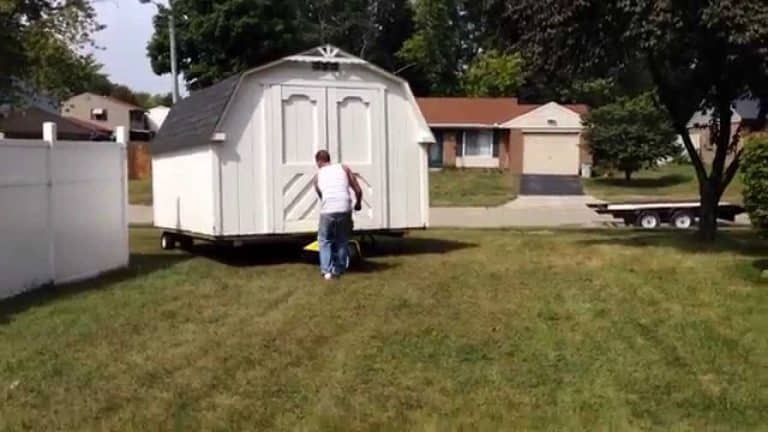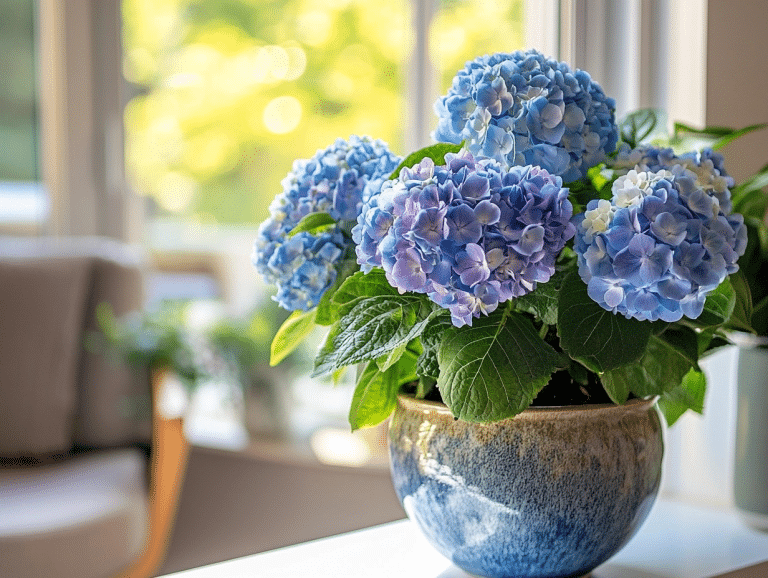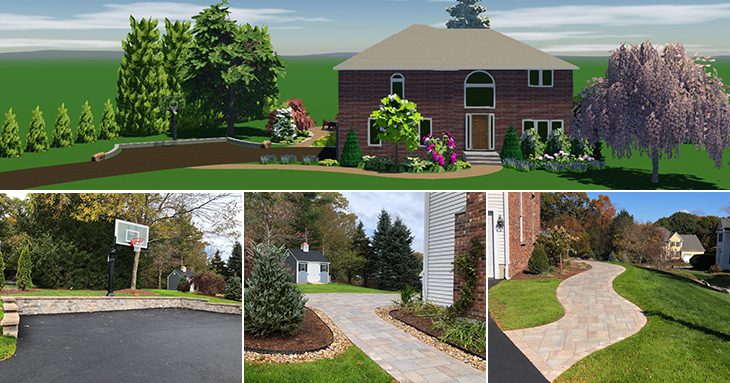Step-by-Step Process to Create a Magical Garden

Want to turn your outdoor space into something special? Well, then gardens offer the best chance to build your own little paradise.
Many people think garden design is hard, but it doesn’t have to be. With some basic tips and tricks, you can make a garden that looks good and feels even better.
When visitors walk into your garden, you want them to feel welcome and impressed. A well-planned garden sets the right mood and makes people want to stay longer.
In this guide, you’ll learn useful ways to design and grow a garden that stands out.
How to Create a Magical Garden
From picking the right plants to making smart layout choices, these tips will help you create a space that looks good in every season.
Let’s look at how you can make a garden that will make your neighbors stop and stare.
1. Plan Your Garden’s Layout
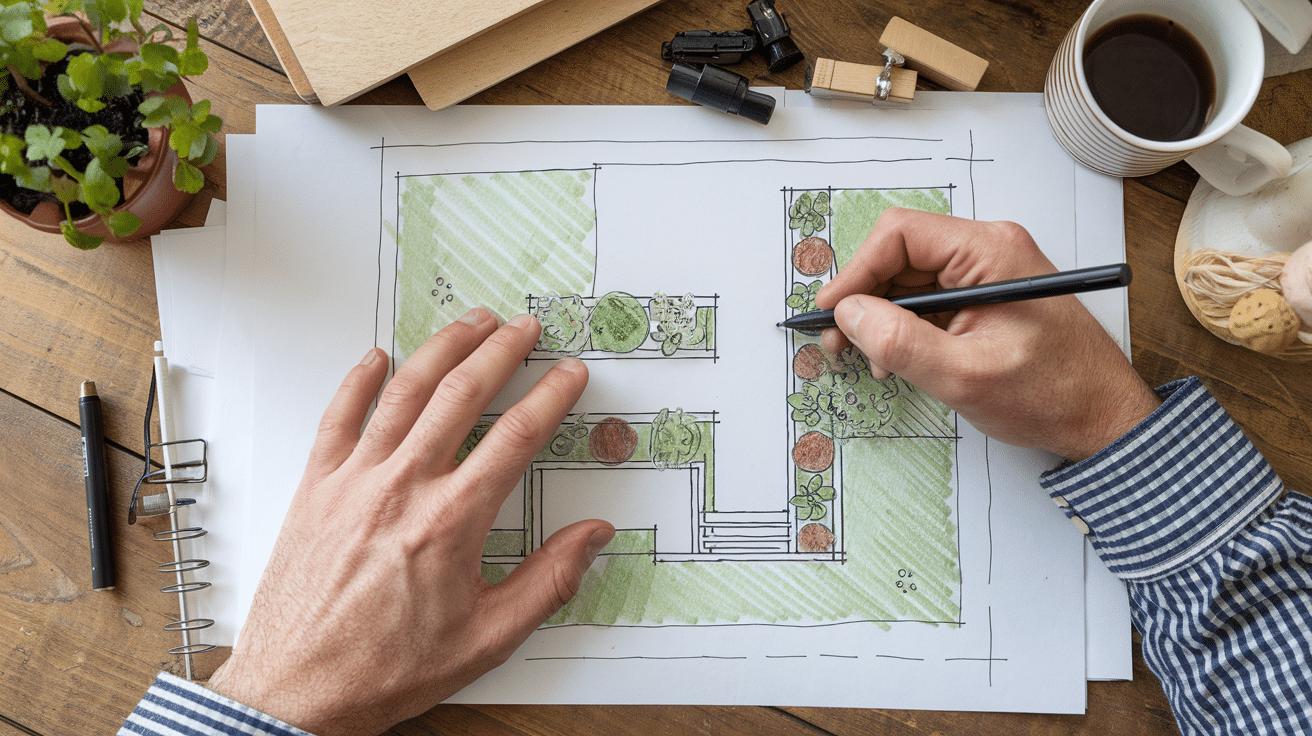
Before you start digging or buying plants, you need a good plan. Taking time to map out your garden will save you work later and help you make better choices about what to plant and where.
Start with a simple sketch of your yard—Mark sunny spots, shady areas, and places that get both. Think about what you want from your garden. Do you need play areas for kids? A spot to grow food? A quiet place to relax?
Pick a theme or style that fits your home. This could be formal with straight lines or casual with curves and mixed plants.
Plan walking paths that let you reach all parts of your garden. Make them wide enough for easy movement. Choose a focal point, such as a small tree, bench, or water feature, to draw the eye and give your garden a center.
2. Choose the Right Location
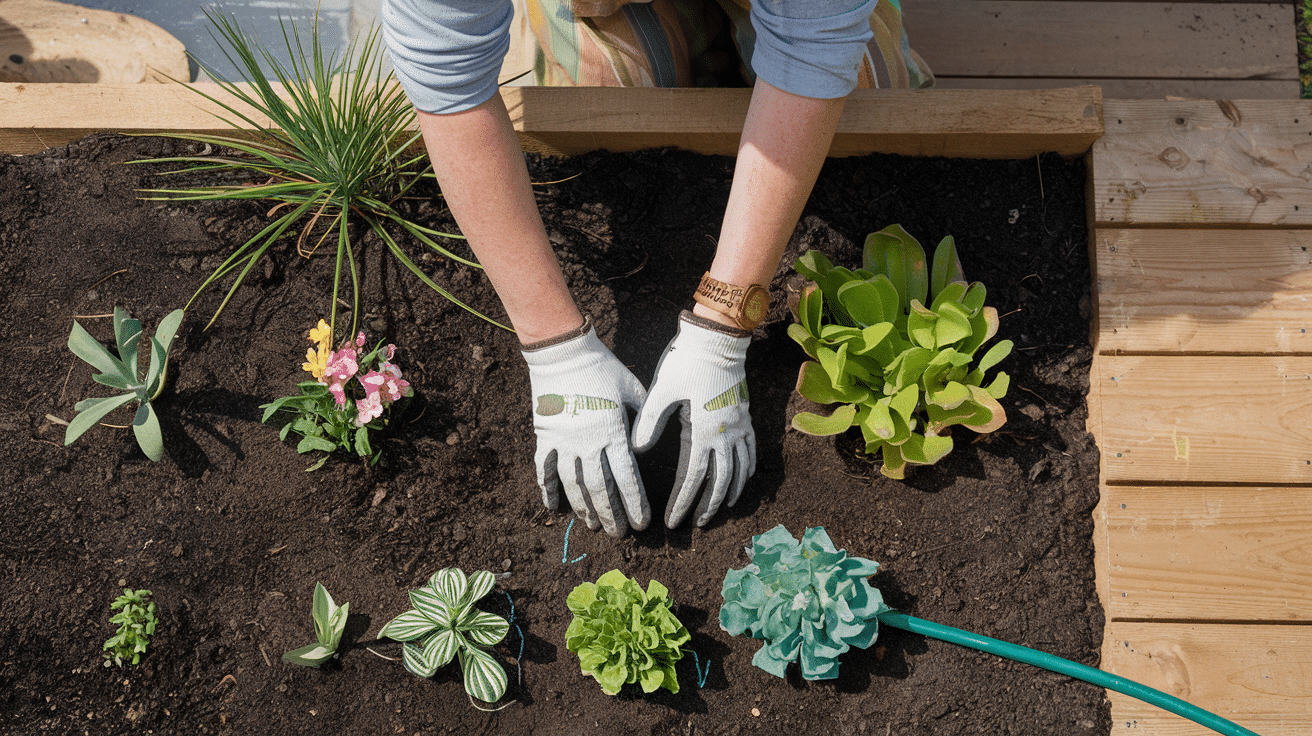
If you want to grow flowers or vegetables, look for a place that gets at least 6 hours of sunlight. Most plants need good light to thrive.
Check how water flows through your yard. Avoid spots where water sits after rain, as this can drown plant roots. Then, pick a spot you can see from your home. You’ll enjoy it more often and be more likely to spend time caring for it.
Think about wind patterns in your yard. Too much wind can damage tall plants and dry out soil faster.
Choose a spot close to a water source. Hauling heavy watering cans across your yard gets old fast!
3. Pick Your Plants and Flowers
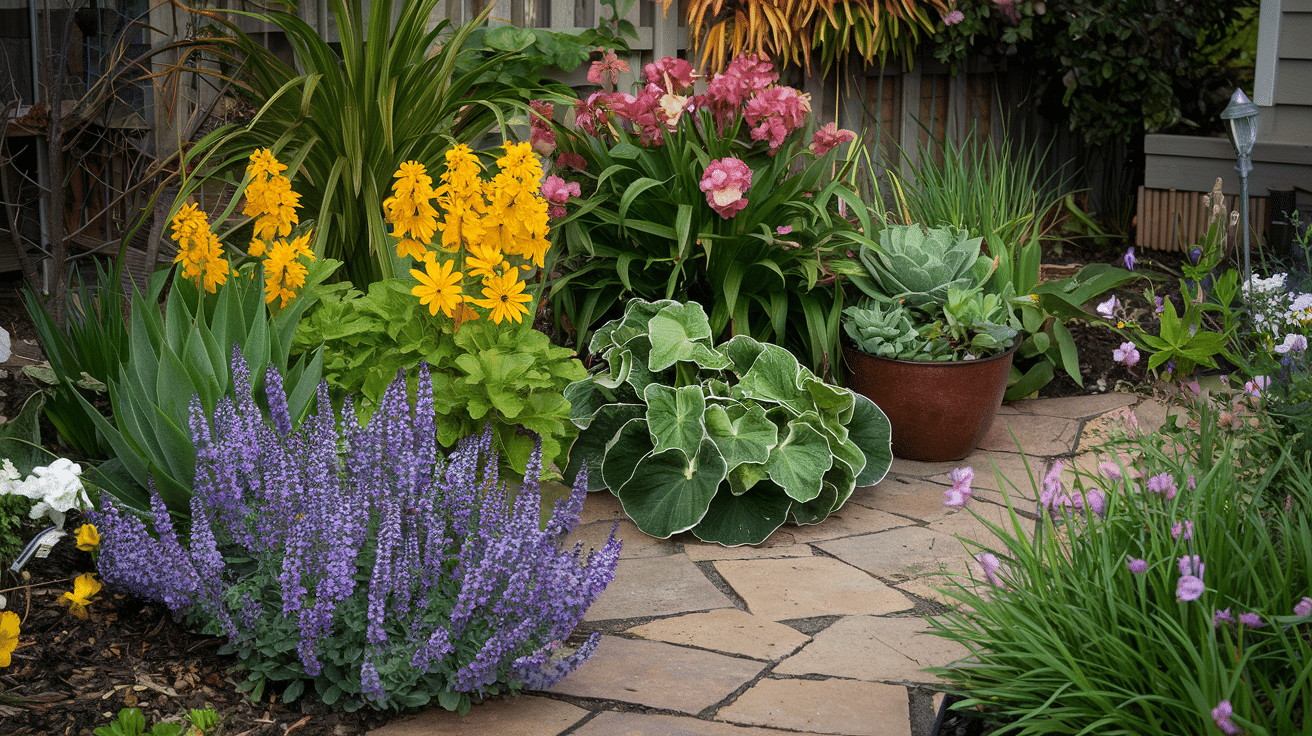
Match plants to your garden’s conditions because some need full sun, while others do better in shade or damp soil. Then, mix plants that bloom at different times. This way, your garden will always look good.
Include some plants that stay green all year. These give your garden structure when flowers aren’t blooming.
You can also choose a few plants with nice smells. Scented plants near paths or seating areas add an extra touch to your garden.
Start with plants that are known to grow well in your area. Local garden centers often sell plants that suit your climate.
4. Add Magical Lighting

The right lights make your garden feel warm and special at night. For that, use string lights in trees or along fences to create a soft glow above your garden. These add a magical feel without harsh light.
The, place solar path lights along walkways for safety and to mark the edges of your garden at night. Try uplights at the base of special plants or trees to show off their shape after dark. This makes them stand out.
Add small lights among flowers or bushes to create gentle spots of light that look like stars in your garden.
Use lights that change color to match different moods or times of year. These can make your garden look fresh and new.
5. Create a Pathway to Lead the Way
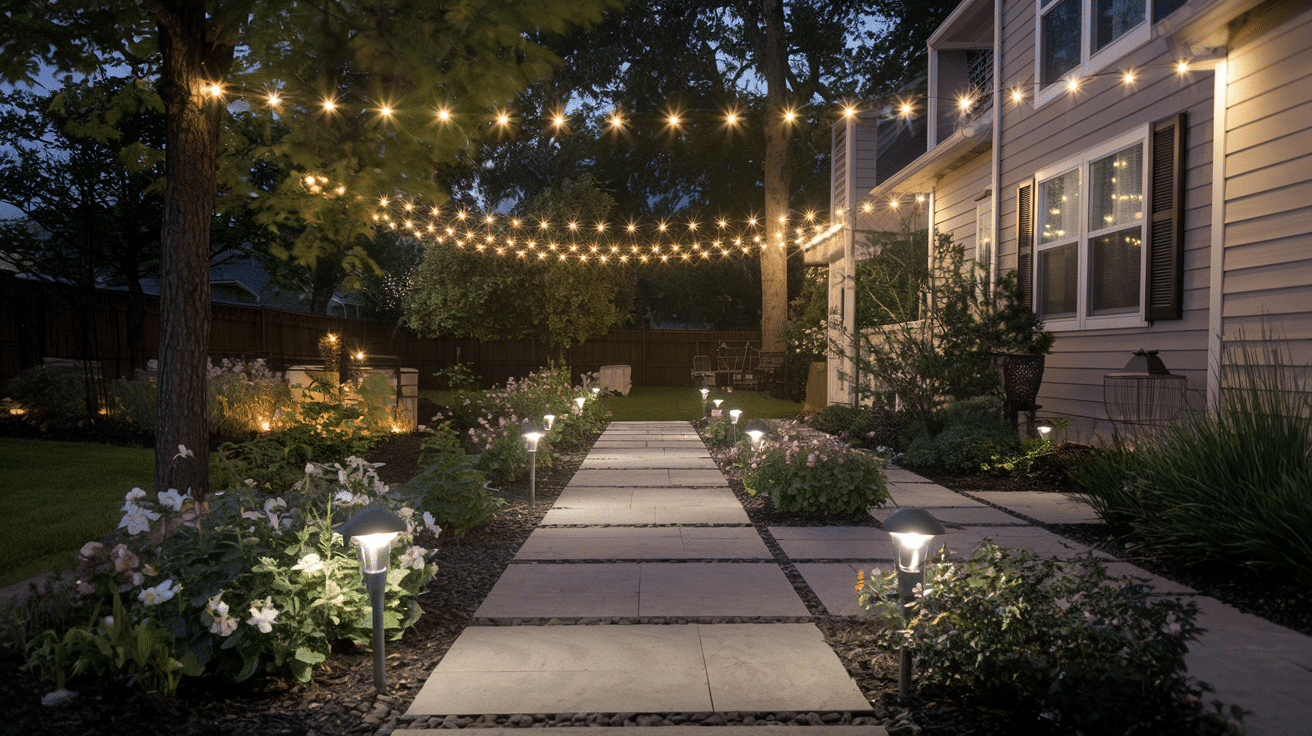
Choose path materials that match your garden style. Bricks work well in formal gardens, while gravel or wood chips suit casual spaces.
Make your main paths wide enough for two people to walk side by side, about 3-4 feet across.
When possible, add curves to your paths. Gentle bends make the walk more fun and help people slow down to enjoy the view.
Edge your paths with small plants or stones to keep them neat and stop them from spreading into your garden beds.
Think about where people will want to walk in your garden. Watch for worn spots in the grass that show where paths are needed.
6. Incorporate Water Features for Calmness
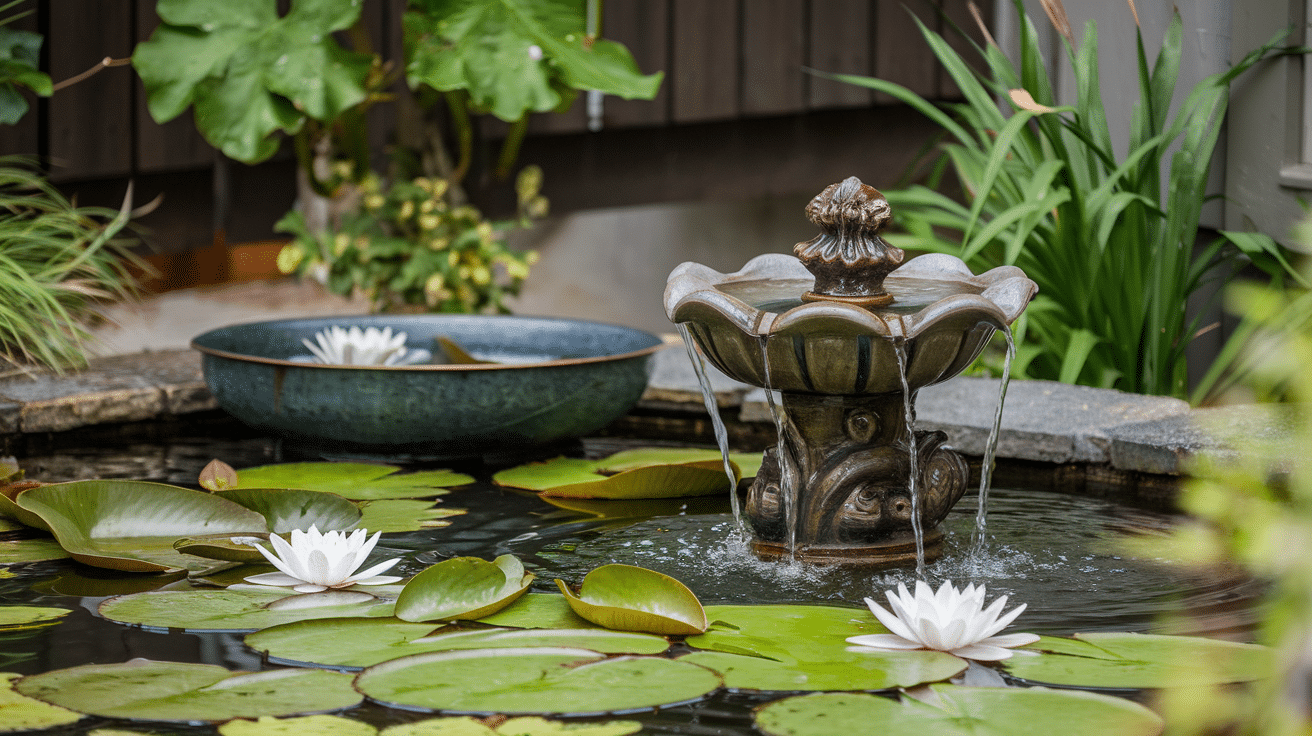
If you’re new to water features, start small with a simple bird bath or tabletop fountain. These are easy to set up and care for.
Place your water feature where you can hear it from your favorite garden spot. The sound is often as nice as the look.
Add water plants like water lilies or lotus to larger features. They help keep the water clean and add color.
Make sure your water feature has some shade during the day. This helps keep the water cooler and reduces algae growth.
Think about adding small fish to larger ponds. They add movement and help control bugs that might breed in standing water.
7. Add Whimsical Garden Decorations
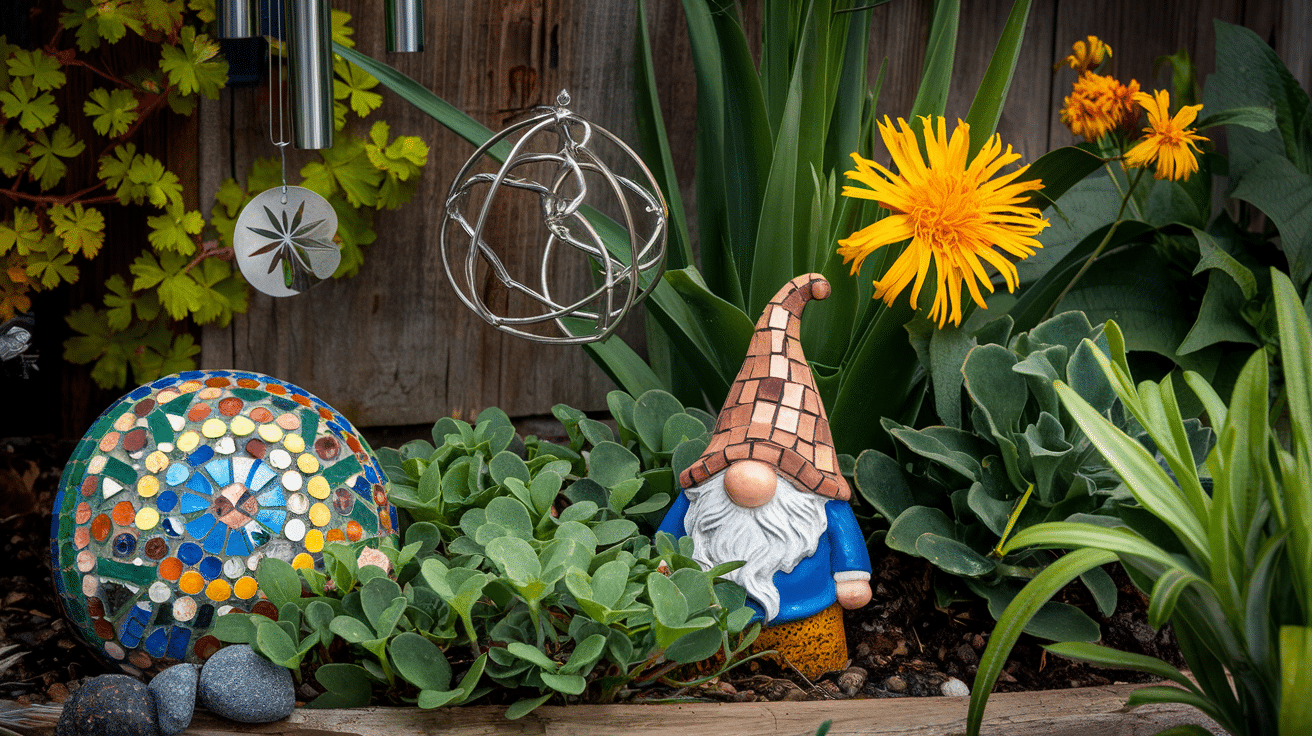
Look for weather-proof items that will last through rain and sun. Metal, stone, and sealed ceramic work best outdoors.
Place decorations where they’ll be easy to see but not in the way. Tuck them among plants or at the ends of paths.
Choose a few special pieces rather than many small ones. Too many decorations can make your garden look cluttered.
Add some items that catch light or move in the breeze. Wind chimes, spinners, or glass balls create movement and sound.
Try making your garden art from found objects. Painted rocks, old dishes, or wire sculptures add a personal touch.
8. Set Up Seating and Quiet Spots
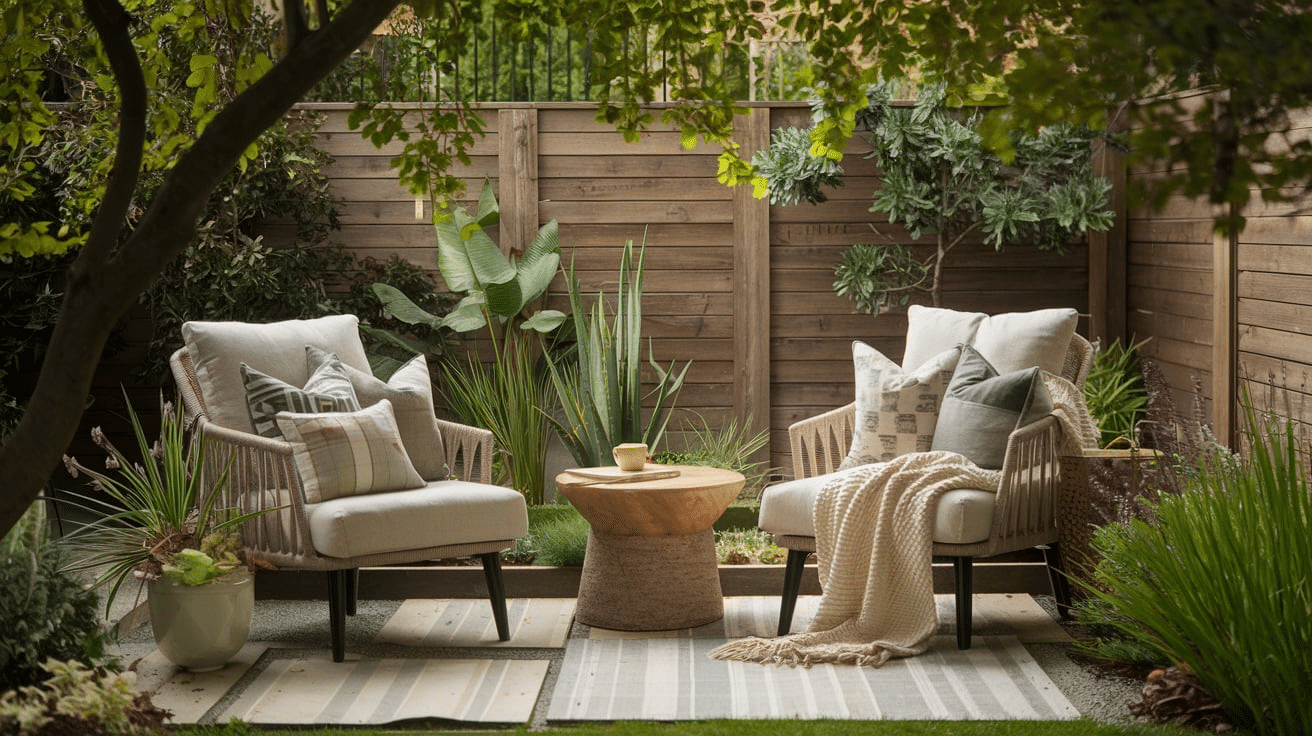
Creating comfortable seating and quiet areas in your home makes it more relaxing. These spaces give you places to rest, read, or simply enjoy a moment of calm in your busy day.
So, prefer to choose seating that fits your body well. Chairs and sofas should support your back and be at the right height for easy getting up and down.
Place seating near natural light when possible. Windows provide both light for reading and views that help you feel more at peace.
Then, create at least one dedicated quiet corner. This might be a reading nook with a chair, small table, and lamp, away from busy areas of your home.
Add soft elements to make spaces feel cozy. Pillows, blankets, and soft rugs help make your quiet spots more inviting and comfortable.
DIY vs. Hiring a Professional: Which is Better
Creating a magical garden has two main paths: doing it yourself or hiring a professional. Both options have advantages that might work better for your needs.
- DIY gardening gives you complete control over every plant and design choice. You’ll learn new skills along the way and feel more connected to your garden. The money saved can go toward special plants or garden features instead. Many garden owners find that hands-on work brings deep satisfaction and stress relief.
- Hiring professionals saves time and reduces physical strain. Garden experts bring years of knowledge about what plants work well together and how to solve common problems. For complex projects like water features or large tree planting, their skills become even more valuable.
The best choice depends on your time, budget, and personal goals. Many garden owners find success with a mixed approach – handling simple tasks themselves while bringing in help for bigger projects.
What matters most is that the garden brings joy, whether you built it all yourself or had some expert help along the way.
Certain List of Ideas for Your Magical Garden
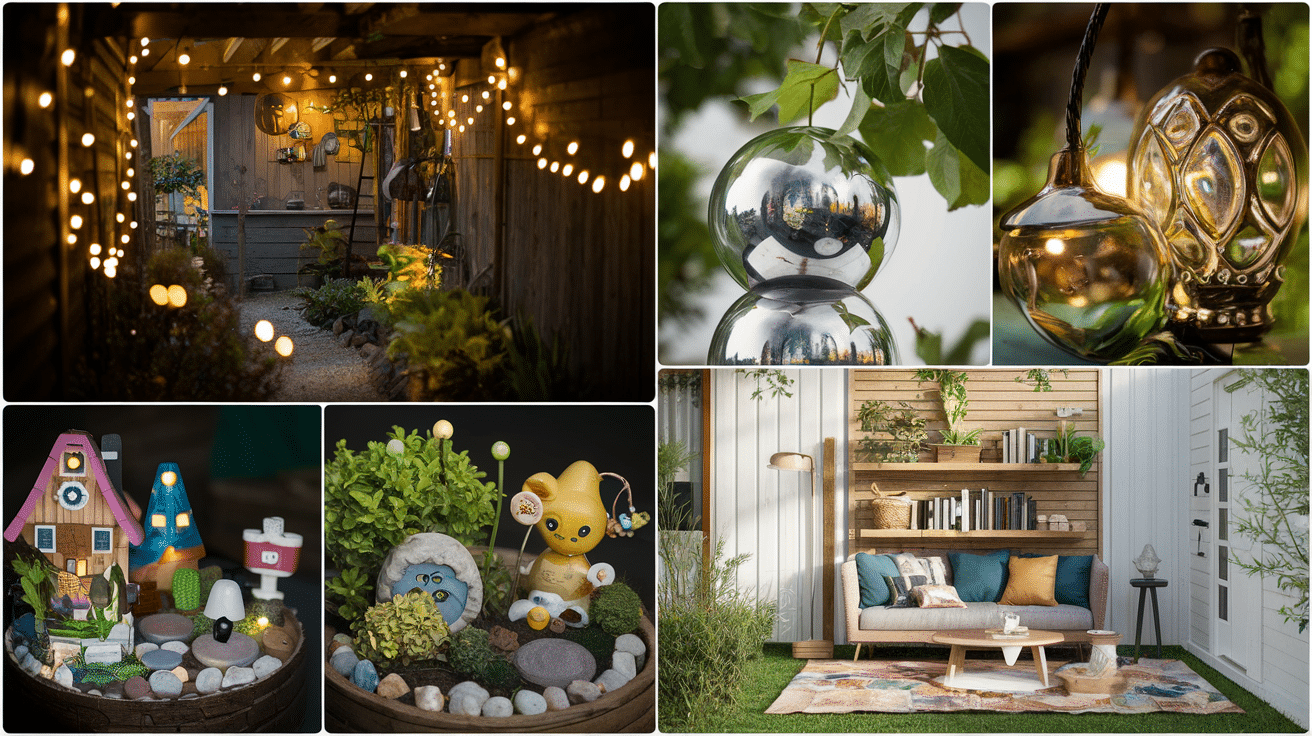
Here are some unique ideas that go beyond the usual suggestions to create a truly personal outdoor haven.
- Create a Fairytale Reading Nook: Build a small circular bench around a tree with weatherproof cushions and a tiny shelf for books about plants and magic.
- Plant a Moon Garden with Reflective Elements: Mix white flowers with silver-leaved plants and add mirrors behind them to catch and multiply moonlight.
- Install a Musical Pathway: Embed wind chimes at different heights or create stepping stones that make different tones when walked upon.
- Grow a Tiny Door Garden: Plant miniature varieties near small decorative doors at the base of trees or garden walls to suggest tiny garden residents.
- Create Optical Illusions: Use cleverly placed mirrors, painted perspectives on fences, or strategically positioned plants to make your garden seem larger or to hide and reveal special features.
These unique touches transform an ordinary garden into a personal wonderland. The magic comes from surprising elements that catch visitors off guard and make them smile with delight.
Tips to Maintain a Magical Garden
- Water deeply once or twice weekly instead of lightly every day to develop stronger root systems.
- Apply a 2-inch layer of mulch in spring to keep moisture in and weeds out.
- Take a weekly walk through your garden to spot pests or diseases before they spread.
- Remove dead flowers regularly to encourage plants to produce more blooms.
- Sharpen your garden tools at the start of each season for cleaner cuts that heal faster.
- Test the soil every two years to know exactly what nutrients your garden needs.
- Keep garden edges neat with a monthly trim for a tidy look with minimal effort.
Conclusion
From setting up cozy spots to sit to adding unique touches that surprise visitors, your garden can become a true getaway right at home.
A magical garden offers more than pretty plants—it creates a personal retreat that brings joy and relaxation after long days.
This matters because connecting with nature in your own space improves your daily life in ways few other home projects can.
Start small with just one idea from this post. Maybe set up that reading nook or add plants that catch moonlight.
Take photos as you go to track your progress.
Share your results in the comments below as your outdoor space transforms into something truly special.


